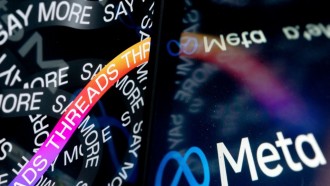
Decentralized autonomous organizations, or DAOs, have been gaining a lot of popularity and traction, and for a good reason. For one, they are a very efficient way to run a business. They allow for decentralization of power, transparent decision-making, and a shortened feedback loop between all stakeholders of an ecosystem, making a company more nimble and responsive to change.
DAOs can serve as an important augment to traditional organizations. For example, they are highly resilient to attacks and censorship, as they do not rely on centralized control points. In addition, their transparency entails accountability, making it very difficult for anyone to commit fraud or embezzle funds, which in turn builds trust and credit with stakeholders and the general public.
However, DAOs are still a relatively new phenomenon, and many challenges still need to be addressed. For example, it can be difficult to change the code of a DAO once it has been launched, making it hard to adapt to changing circumstances.
There is also the risk of failure due to bad governance. If a DAO does not have robust governance mechanisms in place, it can easily be taken over by bad actors who can then use the DAO's funds for their own benefit.
But most importantly, tasks carried out by most DAOs today cannot be integrated into one solution that integrates all the necessary functional units; rather, they involve many incoherently developed products awkwardly put together.
Foundation for the DAOs of the future
While DAOs offer a very promising model for the future of organizations, there is also a lack of a complete toolset covering the most important elements from organizational management, governance, task management, tools for fiscal execution, issuance and & settlement of financial products, risk control, and compliance.
Sure there are solutions like Gnosis Safe, Snapshot, and Colony that provide a framework suitable for one use case or another. However, there still isn't one that offers a coherently integrated platform to address these very real and urgent demands.
As such, in order to enable all kinds of ecosystems to establish governance economies, manage internal finance, and connect with DeFi investors everywhere, Ink Finance is working on establishing a gold standard of financial DAO construction and operation. It will serve the best-decentralized organizations, including emerging venture capital and crypto managers and syndicate groups, Web3 protocols, and even traditional institutions such as auction houses, Fortune 500 corporations, and mainstream financial firms.
INK is built for the polymorphic Web3 DAOs of the future. It serves DAOs of all sizes with different needs for different missions, such as diversified organizational structures with comprehensive economic systems and diverse incentives, managing a wide variety of assets, including introducing real-world assets into the Web3 world.
Blockchain as a Service (BaaS)
With the market needing an organizational management structure to enable non-trivial organizations to manage their business via DAOs, Ink Finance ("INK") has emerged as the sole DAO tool in the current Web3 space that can fully integrate the organizational structure, the governance process, and the on-chain execution of the most consequential decisions, while assigning tangible economic meaning to a DAO's meta token.
For decentralized organizations with different missions from various sectors, INK provides internal polymorphic organizational structures that can evolve and adapt as their businesses grow. The flexibility of hierarchical configuration and the associated incentivization and control schemes allows for dynamic and versatile organizational efficiency.
INK's fiscal and financial solutions, such as the treasury and portfolio management facilities, meanwhile embody the best practice and professionalism. They can be implemented in a true plug-and-play fashion at each level of a hierarchical ecosystem.
This way, Ink Finance is essentially acting like a BaaS (Blockchain as a Service) platform. Its no-code and one-stop facilities allow on-chain organizations to fulfill the needs of organizational management, decision-making, fiscal control, and financial services throughout all aspects of their lifecycle.
A Comprehensive & Flexible Platform
Among Ink Finance's several features are the integrity and accountability of on-chain execution of critical financial decisions such as treasury creation and revenue audit. As for scalability, the platform has built-in an expandable dictionary of proposal types with fully itemized metadata, with each item representing an article of a proposal.
For any DAO that needs to implement sub-task groups by their specialties or regional divisions, INK provides a comprehensive yet flexible structure featuring meta DAO and sub-DAOs to achieve a balance of hierarchical control, specialization, and autonomy. A DAO at any level of hierarchy is always created with a Board and a virtual Public Voting Committee. Any DAO member can find any activities involving themselves that are initiated and processed by the different Committees in the DAO.
To defend these DAOs from Sybil attacks, INK adopts a highly customizable staking mechanism, which also assigns an explicit governance utility to a DAO's meta token. This substantially raises the barrier of one member using multiple wallets to recycle the same amount of tokens in voting. Additionally, INK integrates with the best decentralized biometric identity protocols (such as Humanode) to securely verify members while maintaining their privacy.
A Solution to the Governance Problem
Governance right is an integral part of a DAO, which is generally represented by the meta token of the DAO. Based on the principle of "having skin in the game," managers must stake a minimum amount of DAO tokens, and public votes are also expressed by staked tokens. For this purpose, INK provides an "INKStakingEngine" to DAO creators to plug their emission tokens into, with customizable reward & penalty schemes for different staking terms, allowing DAOs to fit into their own tokenomics.
The stake-to-vote requirement is an effective mechanism guarding against Sybil attacks as well as assigning clear governance utility to the meta token and rewarding participation in the governance process. But of course, such sheer stakeholding power is an imperfect mechanism. To mitigate its ill effects, INK has devised the badge mechanism to let community members express governance rights via non-stakeholding contributions.
Badges are typically issued by the sub-DAOs of a large ecosystem where members are focused on narrower missions that should not be disrupted by the large size of the holders of the meta token. In this manner, DAOs can effectively balance the power of governance by configuring the weights of badges in lieu of stake-to-vote.
DAOs on INK are required to issue their own tokens on their native blockchains, in general. However, INK also has its native token QUILL that can be used for any small DAO as its ready-to-use governance token if it doesn't intend to issue its own DAO token.
UCV for Financial Management
For internal fiscal and external financial management, INK features a Unified Custodian Vault or UCV, that is the smart asset holder capable of safekeeping any form of assets. Any DAO can set up multiple UCVs within its organization to isolate assets or liabilities for different purposes, with different operational authorities administered by different duty-holding managers.
Then there's InkEnvelope which can wrap any asset or financial product into a single token, which can be either fungible or non-fungible and compatible with any mainstream wallet and DeFi facilities. It can be used as a DAO's treasury asset, collateral for borrowing, or as part of an investment portfolio, gaining the benefits of uniformity and liquidity on any blockchain facility.
Besides minting, InkEnvelope encompasses critical information associated with an asset, such as insurance, appraisal, commercial licensing, etc., all assured by the integrity of the governance process.
Together, UCV and InkEnvelope are the underlying technical bedrock of the INK platform's fiscal and financial functions. With them, INK supports independent Treasury, Investment, and Funding operations, allowing each Committee to have its internal procedure regarding financial operations. It provides highly unified operational convenience; and supports regulatorily compliant operations such as fund administration, asset adoption, risk management, and clearing functionalities.
Tackling the Regulatory Issue
Lack of regulatory clarity is another significant challenge for DAOs. Because DAOs are not recognized as legal entities, it is difficult for DAOs to operate in the traditional financial system. It also makes it hard for DAOs to raise funds from legitimate international investors. To meet this demand, INK is integrating with regulated financing platforms such as Republic Capital, HKbitEx, Draper Dragon, and DigiFT.
The recent fallout of FTX and other major centralized crypto financing firms has already pushed crypto regulation to the forefront of the industry. Here, the INK platform ensures that its users are fully prepared to embrace regulated on-chain finance through its professionally built, highly adaptive, and flexible infrastructure.
INK's various available fiscal and financial tools can be used like plug-and-play for a DAO bootstrapped from a barebone stage.
For instance, when the DAO is in need of fundraising, it can set up a Funding Committee with key managers proposed. Once this new Committee is voted into place, it can issue fundraising products purchased directly by individual members, exclusively underwritten by an external platform, or sold to an external investment DAO or an investment club set up as an internal sub-DAO.
INK's beta version is already open for public testing featuring some of the most important management tools. One can see how INK systemically and securely implements the flow of decision-making to execution. When fully developed, INK can support dynamic plug-and-play use cases, including investment syndicates or clubs, large asset managers, community DAOs, and Web3 gaming or metaverse.
To summarize, by providing highly customizable and individually operated backbones for DAOs from vastly different sectors, Ink Finance aims to position itself as the most powerful DAO tooling platform in the Web3 world.
* This is a contributed article and this content does not necessarily represent the views of techtimes.com









